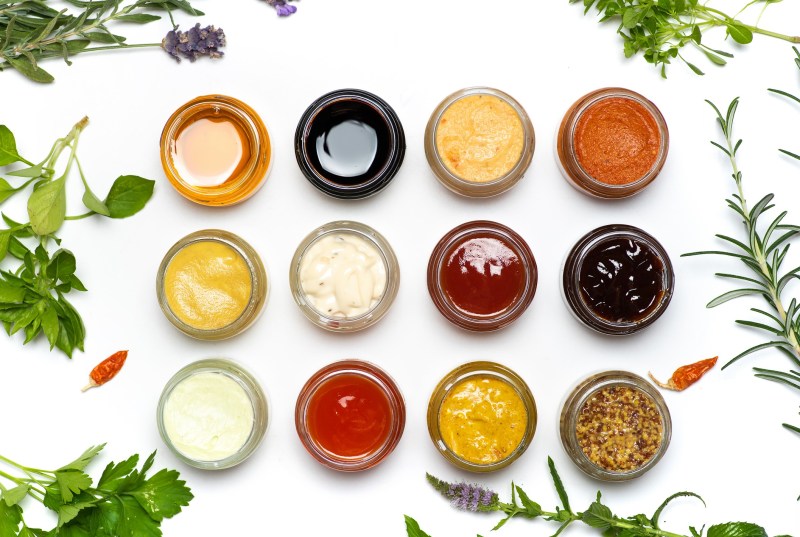
Did you know that most sauces come from five foundational sauces known as mother sauces? These mother sauces add moistness, flavor, richness, color, and shine, as well as interest and appetite appeal. These sauce-making techniques are some of the basic skills needed in cooking, and they still need to be combined into finished sauces. Finishing techniques have three elements to them: liquid, thickening agent, and seasoning or flavoring ingredients.
The leading sauces are made of liquid plus a thickening agent. The sauces that are derived from the leading sauce are called small sauces. The small sauces are created by using the leading sauce plus additional flavoring ingredients. The best way to remember the name of each mother sauce is by the acronym BETH V: béchamel, espagnole, tomato, hollandaise, and velouté.
Béchamel sauce
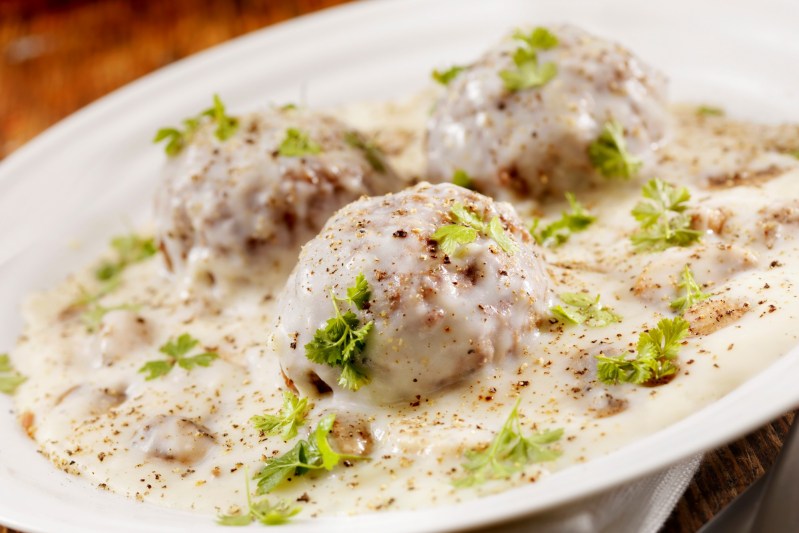
The béchamel sauce was originally created with veal stock that was simmered and reduced. The basic béchamel recipe used today is milk and a white roux. White roux is simply a chosen fat, usually clarified butter and flour. You can then add additional spices such as a bay leaf, onion, salt, and pepper. An example of the use of béchamel sauce is in the preparation of lasagna. Other uses for a béchamel are:
- Cheddar cheese sauce for just about anything. You can make beer cheese, a cheese sauce for nachos, or just a nice cheese sauce for that fondue party you are going to have.
- Mustard sauce to use as a base for that barbecue sauce or for your ham croquettes.
- Soubise sauce is a nice onion sauce that you can spoon over pork tenderloin or roasted chicken.
- Mornay sauce goes great with broccoli or cauliflower. It’s another cheese sauce using white cheese.
Espagnole sauce
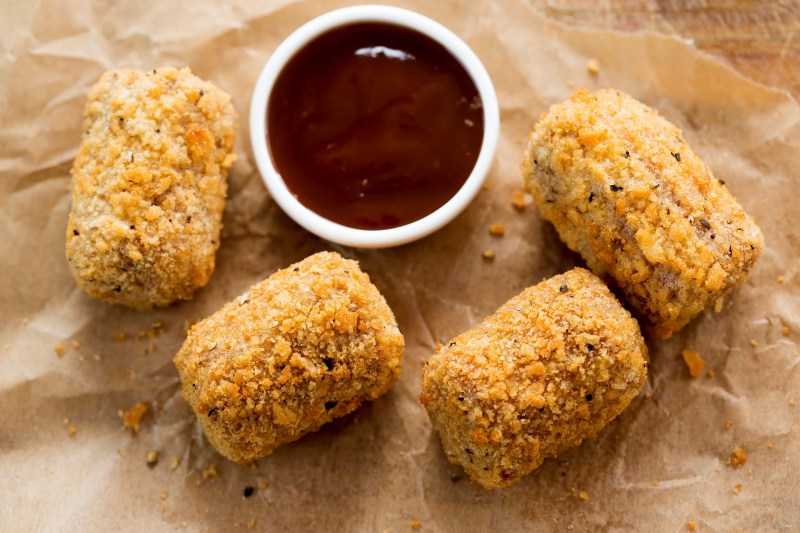
Espagnole, also known as brown sauce, is the start of a hearty and flavorful sauce typically accompanied with red meats. This sauce uses brown stock and brown roux. Brown roux is made from a chosen fat and flour but is cooked longer so the flour turns a specific shade of brown. Even though this sauce is a bit more complex, it can give you sauces with deep flavors like:
- Chasseur is a classic hunter’s sauce using fresh ingredients such as mushrooms, shallots, chunks of tomato, and fine herbs. It is a simple sauce to make and goes well with grilled or roast chicken.
- Madeira sauce is made from demi-glace or Espagnole and Madeira wine, which is a fortified wine from Portugal.
- Mushroom sauce is another hearty and earthy sauce that goes well with steak or chicken. You can finish it off with some sherry and lemon juice to give it that pop.
Tomato sauce
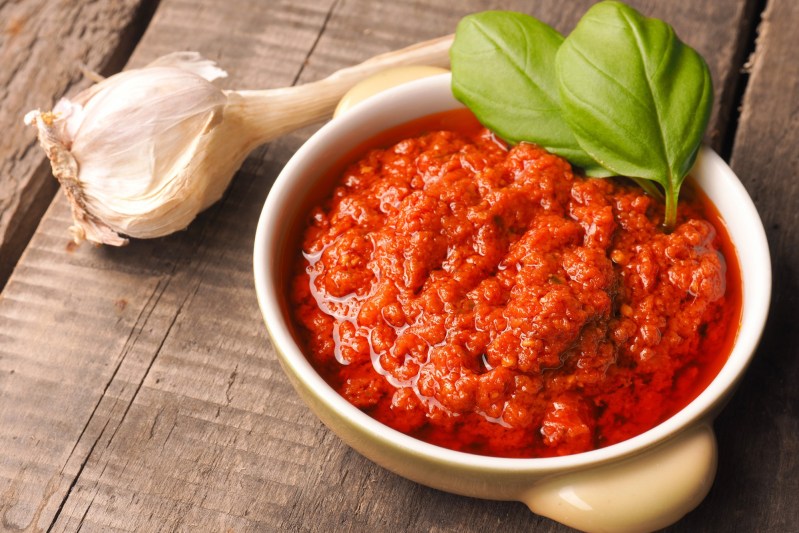
This tomato sauce is basically a tomato purée made with pork bones, herbs, spices, and mirepoix. It is slightly different than the normal tomato sauce you would use for pasta. You can omit the pork bones in order to create a vegan version of this sauce. The tomato sauce should be strained for the smoothest consistency possible. This is not the typical sauce used for Italian cooking, although we think it would make a fine addition to your next pasta dish. Examples of tomato sauce-based sauces are:
- Creole sauce is a spicy tomato sauce best used on shrimp, crawdads, chicken, and fried oysters. You could even use it in your pasta dishes.
- Portuguese sauce is a simple sauce that can be used on pasta, with rice, or with beans.
- Spanish sauce is another spicy tomato sauce that you can use for chicken, pasta, pork, and even beef. It is not to be confused with salsa.
Hollandaise sauce
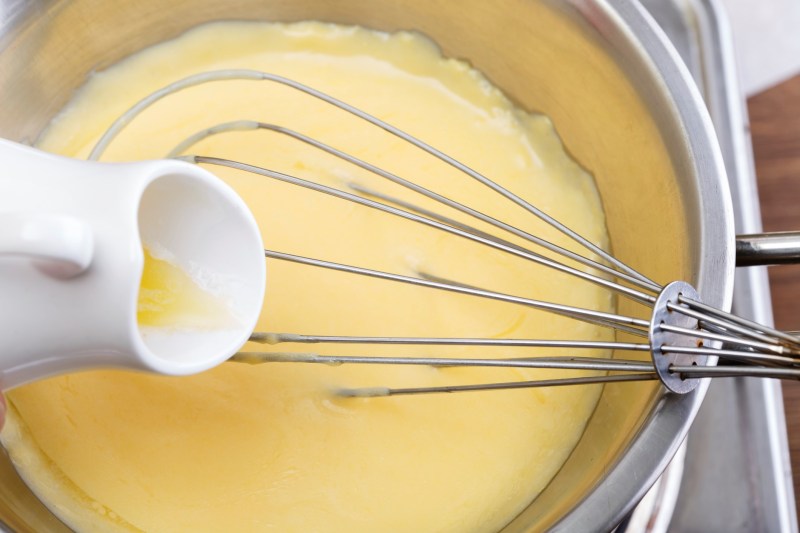
Hollandaise is a butter sauce, a sauce that uses butter as the main ingredient. Hollandaise, and its relative bearnaise sauce, is an egg-thickened sauce where you use an emulsion of clarified butter and water. The water and clarified butter mix together because the egg yolks hold the butter droplets in the water. Here are some examples of Hollandaise variations:
- Bearnaise and hollandaise are basically the same sauce, but Bearnaise has a few more ingredients, such as tarragon and shallots. One of the best ideas was to come up with Eggs Benedict using these sauces. You can even toss it on corned beef hash.
- Choron sauce is a bearnaise sauce with tomato paste mixed into it. You can put this on eggs, vegetables, and seafood, especially lobster.
- Mousseline is a sauce with whipped heavy cream folded into a hollandaise sauce. It would be a perfect sauce for a grilled or poached salmon, or any fish for that matter.
Velouté
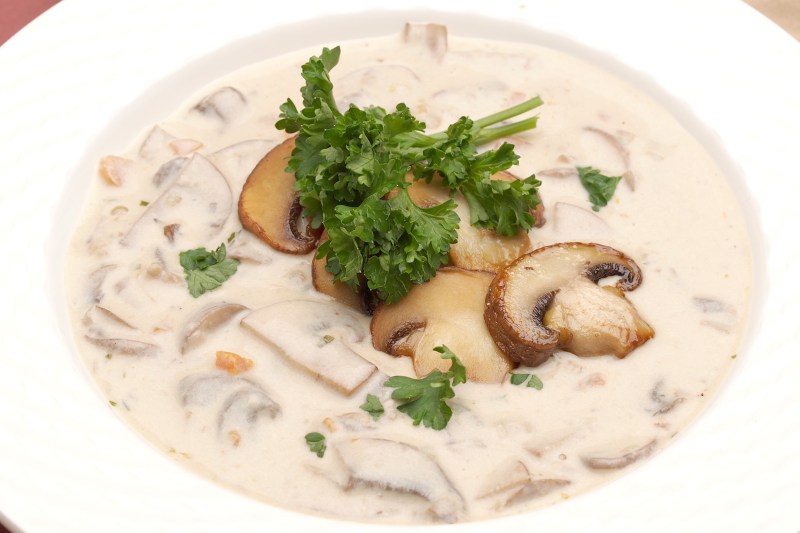
Velouté is traditionally made from veal, chicken, or fish stock but you can create a vegetarian version by using vegetable stock. You can also use this as a base for soups such as asparagus velouté. Velouté sauce variations include:
- Herb sauce is a simple sauce that goes well with roasted chicken, turkey, mashed potatoes, and other roasted vegetables.
- Mushroom sauce is a white sauce made from velouté and pairs well with chicken and pork dishes.
- White wine sauce is a sauce made from fish stock, cream, butter, lemon, and spices. It pairs well with fish and seafood dishes.
Technically not a mother sauce
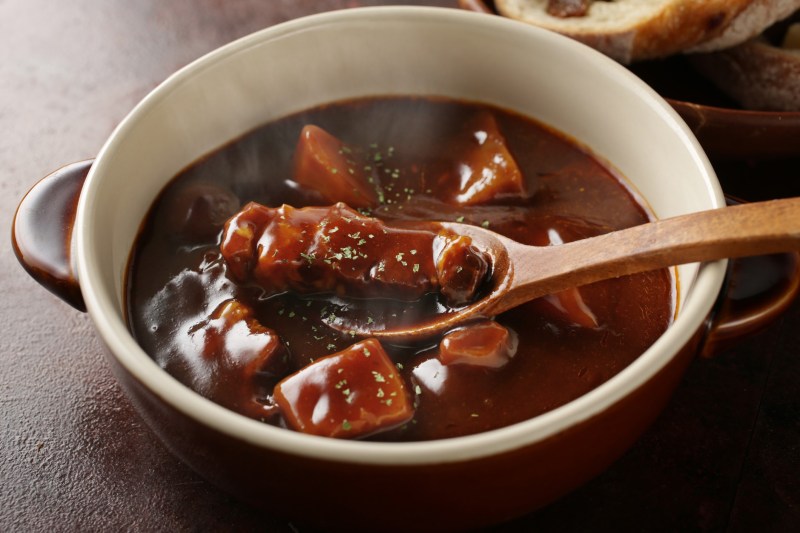
We’re going to throw demi-glace into the mix because it is typically made with brown sauce, or espagnole, and brown stock. It is reduced by half and is a more fully developed and flavored sauce that is preferred by most restaurants. Think of demi-glace as the sauce for your favorite Swedish meatballs. Another well-known sauce is from the Bordeaux region in France called bordelaise, a wine-enriched sauce used for steaks, particularly grilled filet mignon.
Remember, these sauces are only as good as the ingredients. They are the foundation, after all. These examples are just touching the surface and there are many more variations. Learn to make these sauces and the possibilities almost seem endless on the dishes you can create.
General tips on making the mother sauces

Start with high-quality ingredients. Fresh ingredients will make a noticeable difference in the final product, so always go fresh. Don’t be discouraged if your first attempt at a mother sauce isn’t what you imagined. The more you make them, the easier they become until they are second nature to you. Once you’re comfortable with your hand at the mother sauces, get creative. After you’ve mastered the basics, use the mother sauces as a springboard to create your own unique flavor combinations.



